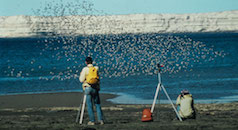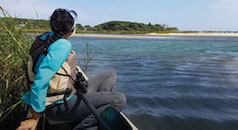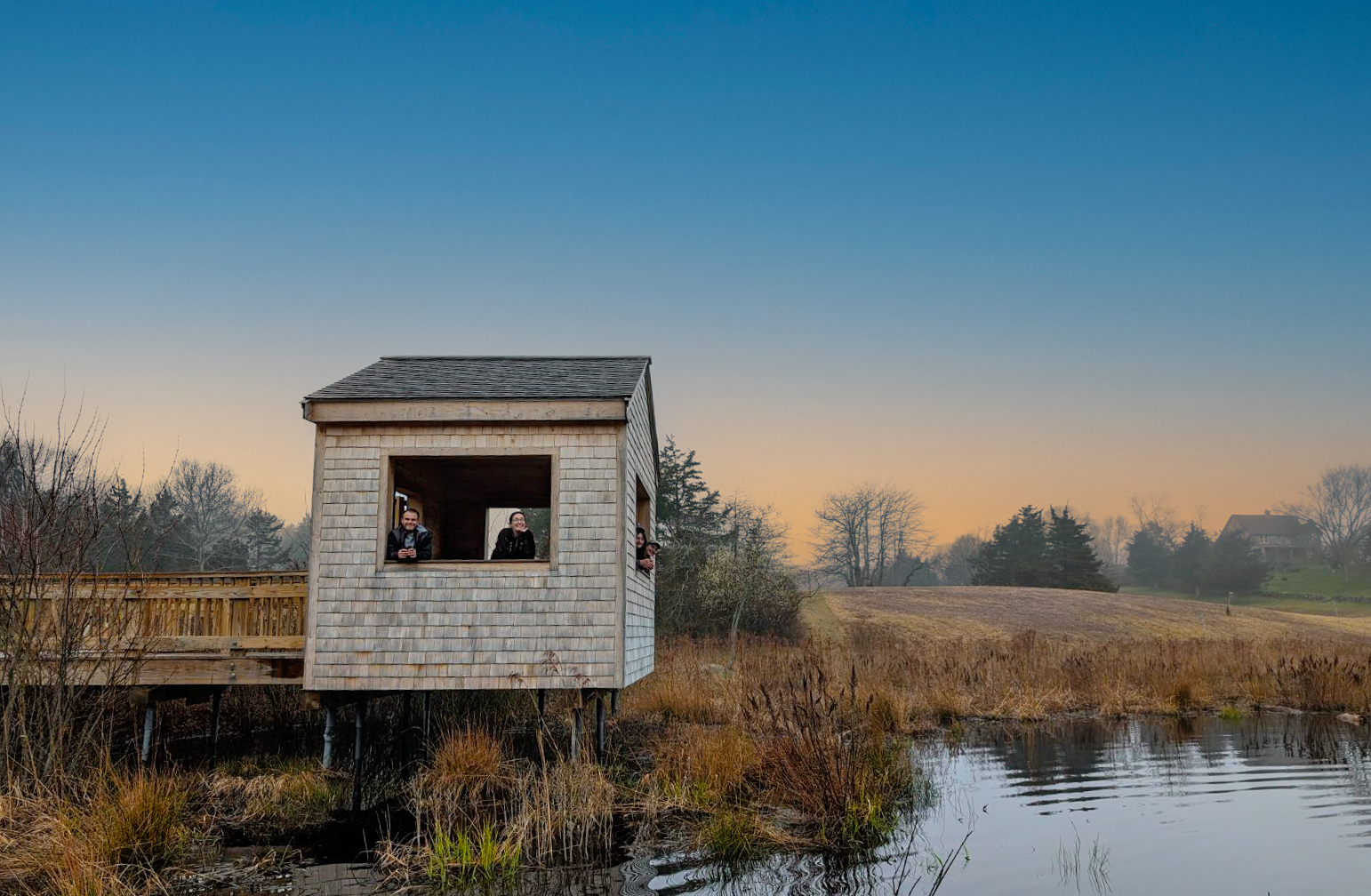Manomet’s spring landbird banding season began last week with a flurry of migrant species, including Red-winged Blackbirds, Brown-headed Cowbirds, grackles, sparrows, and a few warbler species.
Manomet’s 50 mist nets opened on April 15 and have been run on the same dates and in the same locations during the fall and spring migrations since the program began in 1966. This large, standardized dataset provides unparalleled comparisons of range expansions and contractions, yearly variation of migration and long-term population change, according to Banding Director Trevor Lloyd-Evans.
Over the first week of the spring season, the banding team had 102 recaptures and caught 98 new birds of 22 different species. Many of the recaptures were birds that were banded last fall or in previous years and spent the winter here, including White-throated Sparrow, Northern Cardinal, Tufted Titmouse, and Black-capped Chickadee.
“These recaptures let us know which birds survived the winter,” Lloyd-Evans said. “At the end of the season, we will summarize the age structure for recaptures so that we know which birds have been here and for how many years. With the help of Manomet Councilor Rusty Briggs, we are developing a program which will help us look at the age structure for all species caught at the Manomet laboratory over our 49 years of banding research.”
A number of early migrants were caught over the first week of the season, including Icterids (Red-winged Blackbirds, Brown-headed Cowbirds, and 26 Common Grackles) and sparrows (a wave of Song Sparrows and an early Swamp Sparrow).

Over the past few days, southwest winds and warm temperatures brought migrants that winter in the southeastern states, including one Yellow-rumped Warbler, seven Yellow Palm Warblers, five Ruby-crowned Kinglets, one Eastern Phoebe, one Hermit Thrush, and one Chipping Sparrow. The Chipping Sparrow is a particularly rare catch for the Manomet laboratory, where only one or two are typically caught each year.
“A notable spring trend this year is the early return of American Robins to New England,” Lloyd-Evans said. “There was a February warm spell in the southeastern United States, and many robins returned to New England earlier than usual. This is consistent with recent trends in our banding data. Some species, like robins, have been returning north earlier in spring in response to climate change.”
One unusual catch for the banding laboratory was a Northern Rough-winged Swallow, which nest in the bluffs bordering the banding lanes but are not typically caught in the nets. Another unusual visitor – not caught by the banders but seen and photographed in a bog on the Manomet headquarters property – was an adult Yellow-crowned Night-Heron.

This season’s banding staff consists of Grace Alloy-Relihan, Mattie VandenBoom, Sasha Munters, and Lauren diBiccari.
Alloy-Relihan was a bander at Manomet during the fall and spring 2013 seasons. Prior to becoming a Manomet bander she was an intern at the Raptor Trust in Millington, New Jersey, where she helped care for orphaned, sick and injured birds. For the past three years, she has co-taught an ornithology class at Wheaton College.
VandenBoom, who was a Manomet bander last spring, also rejoins the banding team this season. She started banding birds at age 12 and has since spent many fall and spring migrations working as a bird bander at the Auburn Bird Banding Research Station in Auburn, Massachusetts. Last fall, she worked as a bird banding assistant at the Kiawah Island Bird Banding Station in South Carolina.
Munters and diBiccari both join the Manomet banding team for the first time this season. Munters recently did work with a biologist from the Gulf Coast Bird Observatory researching American Oystercatcher reproductive ecology on the Texas coast.
diBiccari, who recently graduated from Dartmouth College, has worked as an avian rehabilitation intern at the Vermont Institute of Natural Science in Quechee, Vermont, and at the Raptor Education Group Inc. in Antigo, Wisconsin.
“We have brought together an accomplished team for our spring banding season,” Lloyd-Evans said. “We expect to have over 500 visitors to the banding lab this spring. As always we look forward to providing our visitors with hands-on opportunities to learn about birds and their migrations.”
The spring banding team. From left to right, Grace Alloy-Relihan, Mattie VandenBoom, Lauren diBiccari, and Sasha Munters.
To view summaries of past banding seasons and read about trends observed over Manomet’s 49 years of landbird banding, click here.
For daily updates and photos from our banding team, follow @ManometBanding on Twitter.
– Haley Jordan





 Back to all
Back to all
